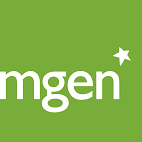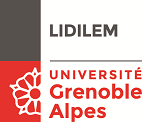Cet ouvrage fait suite au Colloque international des Étudiant·e·s chercheur·se·s en DIdactique des langues et en Linguistique (CEDIL) qui a eu lieu du 30 mai au 1er juin 2018. Cette manifestation scientifique, qui se tient tous les quatre ans, est une opportunité d’échanges pour les jeunes chercheur·se·s de la communauté internationale. Elle leur permet d’entrer en contact avec les réseaux scientifiques de leurs domaines mais aussi de découvrir de nouvelles méthodologies de travail (modalités de recueil et de traitement de données, constitution et partage de corpus, etc.). CEDIL contribue également à la formation des jeunes chercheur·se·s tout en valorisant leurs contributions scientifiques. Cette quatrième édition a été consacrée à la thématique du numérique : “Qu’a changé le numérique ? Perspectives linguistiques et didactiques”. Cette thématique a été pensée de manière à inclure le plus largement possible des travaux touchant aux différentes disciplines des sciences du langage, ce qui a permis au colloque de s’ancrer au cœur des enjeux actuels du domaine, à savoir la constitution des outils numériques et les usages afférents. En effet, l’omniprésence de ces outils et ressources numériques dans le quotidien impacte le rapport à la langue. Elle en modifie l’usage et, par conséquent, interroge la recherche en sciences du langage tant dans les méthodes qu’elle met en œuvre que dans les objets qu’elle observe. Les communicants ont pu traiter de la place du numérique, de son application et de ses conséquences selon trois champs : les méthodologies de recherche, la didactique des langues étrangères et maternelles et les pratiques langagières.
L’édition 2018 du colloque CEDIL a donné lieu à 29 communications de doctorant·e·s et jeunes chercheur·se·s. À chaque début de demi-journée était associée une session “booster”, lors de laquelle chaque communicant·e était invité·e à résumer sa présentation en trois minutes afin d’éveiller la curiosité des auditeur.trices. Ces boosters ont permis à chacun et chacune d’avoir un aperçu du contenu du colloque, nonobstant l’organisation en sessions parallèles.
Chaque demi-journée était également introduite par une conférence plénière permettant d’approfondir un des axes du colloque. Lors de la première journée, Mathieu Avanzi (Sorbonne Université, STIH) a présenté le projet “Cartographier la variation régionale en français à l'heure du numérique” qui consiste à documenter largement les variantes dialectales à partir d’une collecte de données participatives permettant d’affiner leur distribution géographique. La seconde journée, Françoise Boch (Université Grenoble Alpes, LIDILEM) a présenté “La grammaire en couleur, passage au numérique”, une démarche d'apprentissage inductive de la grammaire et de l'orthographe élaborée par M. Laurent, qui fait actuellement l'objet d'une transposition à distance (modules Grammortho). Puis, Georges-Louis Baron (Université Paris V René Descartes, EDA) s’est intéressé aux modes d’intégration et à leurs effets sur les compétences des apprenants dans sa conférence “Les technologies en éducation au cours du temps. Quels effets sur les compétences des apprenants ? Une réflexion rétrospective”. Enfin, Rachel Panckhurst (Université de Montpellier 3, PRAXILING) a interrogé le lien entre numérique et pratiques langagières à partir du contexte des SMS dans une conférence intitulée “Le discours numérique médié (DNM) et les pratiques scripturales contemporaines”. Une table ronde rassemblant les conférencier·e·s autour de la question du numérique a permis de clôturer le colloque.
À la suite du colloque, les communicant·e·s ont été invités à produire un article détaillant leurs travaux. La présente publication fait état de ces articles, sélectionnés par un comité scientifique. Elle est composée de trois parties qui font écho aux trois axes du colloque. Dans une première partie, les auteur·e·s questionnent l’introduction et/ou les conséquences du numérique en didactique des langues. Valva & Cervini traitent de l’apprentissage des langues via le développement d’une application. Le Levier s’intéresse au rapport à l’orthographe de collégiens, de lycéens et d’étudiants de BTS dans leurs écrits numériques. Labetoulle, quant à elle, analyse l’apport d’un dispositif entre cours présentiels et cours à distance pour l’apprentissage d’une langue étrangère. Casani s’appuie sur l’étude d’un corpus d’apprenants italophones pour décrire leurs compétences morphosyntaxiques. Enfin, Biagiotti propose l’utilisation d’une approche didactique par « genres de texte » et « types de discours » pour l’apprentissage des langues-cultures en s’appuyant sur un environnement numérique spécifique. La deuxième partie s’intéresse aux différents usages du numérique dans les méthodologies de recherche en sciences du langage. Zouaidi s’appuie sur deux corpus francophones et arabophones pour analyser le lexique des affects à travers une étude sémantique et syntaxique. Wang propose une analyse bibliométrique à partir d’outils numériques des manuels d'apprentissage des langues secondaires et étrangères en Chine. Mazzioti s’intéresse à l’apport du numérique pour l’analyse des interventions des enseignant·e·s dans les copies d’élèves. Gharbi exploite un corpus de tweets pour proposer une description linguistique de formules expressives. Enfin, Do étudie les marqueurs de concession en français à partir de corpus de débats médiatiques. La dernière partie est consacrée à l’impact du numérique sur différentes pratiques langagières. Soutrenon analyse, grâce au traitement automatique des langues, les écrits du ressenti à l’aune de la transition numérique. Enfin, Lefebvre étudie l’influence des facteurs du numérique dans les phénomènes d’abrègement. Cette publication, nous l’espérons, propose un éclairage sur une problématique actuelle dans les recherches en sciences du langage et contribue à faire connaitre les travaux de jeunes chercheur·se·s. Bonne lecture à tou·te·s !
Roxanne COMOTTI, Wendingoudi Emile OUEDRAOGO, Claire WOLFARTH, Camille NOÛS
En partenariat avec :
 |
 |
 |
 |
 |
 |
 |
 |
 |

